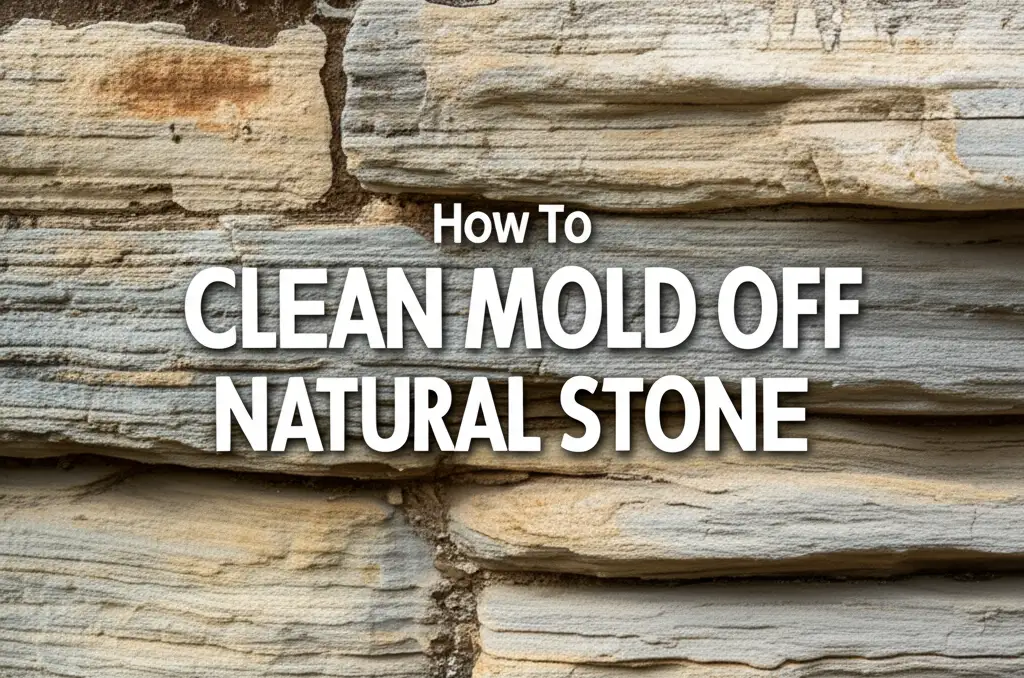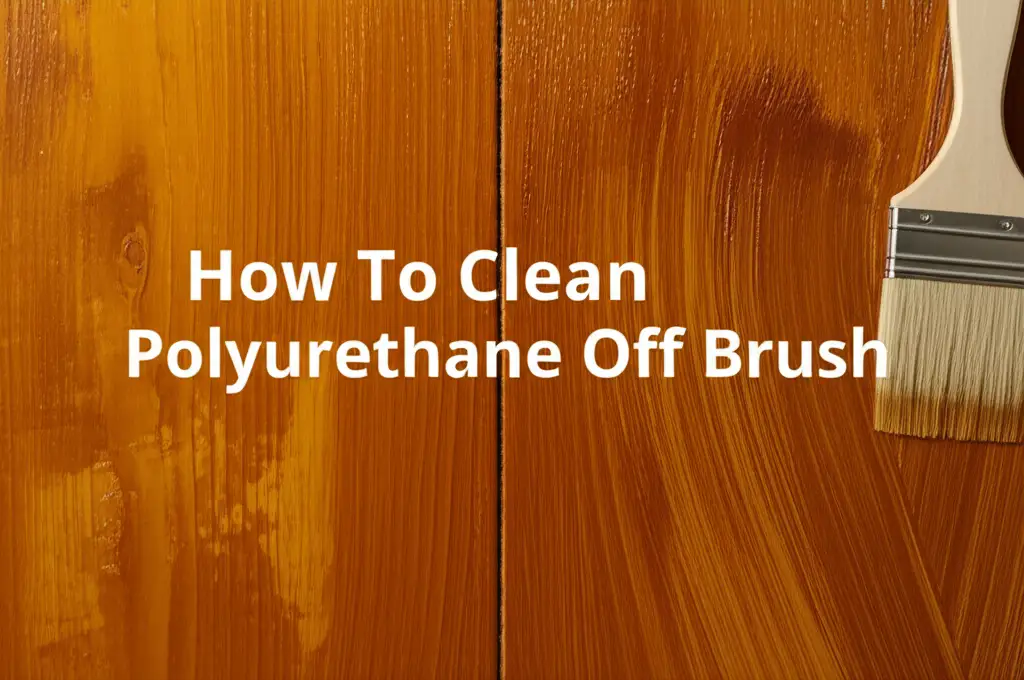· Cleaning Tips · 16 min read
How To Clean Mold Off Natural Stone

Clean Mold Off Natural Stone: Your Complete Guide
Mold on natural stone surfaces can ruin their beauty. It also poses health risks. If you see mold on your stone countertops, floors, or showers, do not worry. You can clean mold off natural stone effectively. This guide will walk you through safe and proven methods. We cover everything from understanding mold to preventing its return. Get ready to restore your stone’s pristine look.
Takeaway
- Identify the type of stone before cleaning.
- Always test cleaning solutions in a hidden spot first.
- Use gentle methods like mild soap and water for light mold.
- Apply hydrogen peroxide or diluted bleach for tougher mold on appropriate stones.
- Prevent future mold with proper sealing and moisture control.
To clean mold off natural stone, first identify the stone type and its porosity. Then, select a stone-safe cleaning solution like diluted hydrogen peroxide or a specialized stone cleaner. Apply the solution, let it sit briefly, scrub gently with a soft brush, and rinse thoroughly. Always test the solution on an inconspicuous area before full application to avoid damage.
Understanding Mold on Natural Stone Surfaces
Mold thrives in damp, dark, and warm conditions. Natural stone surfaces, especially in bathrooms, kitchens, or outdoors, often provide these ideal environments. Porous stones like marble, travertine, and limestone absorb moisture easily. This makes them more prone to mold growth. Granite and slate are less porous, but mold can still grow on their surface or in grout lines.
Identifying mold is the first step. Mold often appears as black, green, or white fuzzy patches. It might also look like slimy discoloration. Do not confuse mold with efflorescence, which is a white, powdery salt deposit. Mold has a distinct musty smell. Ignoring mold can lead to deeper penetration into the stone. This makes cleaning more difficult and can cause permanent staining. It also contributes to poor indoor air quality.
Mold spores are always present in the air. They only need moisture and a food source to grow. The “food” for mold on stone often comes from dirt, soap scum, or other organic matter. This highlights the importance of regular cleaning and maintenance. Understanding mold helps you choose the right cleaning method. It also helps you implement effective prevention strategies.
Some mold types, like black mold (Stachybotrys chartarum), can be toxic. Always assume mold is potentially harmful. Take proper safety precautions before you start cleaning. Knowing your stone type is crucial. Cleaning solutions safe for granite might damage marble. We will discuss specific stone types later in this guide.
Essential Safety Precautions for Mold Removal
Your safety is paramount when cleaning mold. Mold spores can irritate your respiratory system and skin. Some molds can cause severe health issues. Proper protection prevents these risks. Always prepare before you begin the cleaning process.
First, ensure good ventilation. Open windows and doors in the area you are cleaning. Use fans to circulate air and push mold spores outdoors. This reduces your exposure to airborne mold. Good airflow also helps the area dry faster after cleaning.
Wear appropriate personal protective equipment (PPE). A N95 respirator mask protects your lungs from inhaling mold spores. Regular dust masks are not enough. Gloves, such as rubber or nitrile gloves, protect your hands from both mold and cleaning chemicals. Goggles or eye protection prevent spores or cleaning solutions from irritating your eyes. Old clothes that you can wash immediately or dispose of are also a good idea.
Keep children and pets away from the cleaning area. They are more susceptible to mold exposure. Clear the area of any items not being cleaned. This prevents contamination and makes your work easier. If you suspect large areas of black mold, consider professional help. Professionals have specialized equipment and training. They can safely handle extensive mold infestations.
Always read the labels of your cleaning products. Follow the manufacturer’s instructions for use and dilution. Do not mix different cleaning chemicals. Mixing certain chemicals, like bleach and ammonia, produces dangerous fumes. Safety ensures an effective and risk-free mold removal process. Your well-being comes first.
Gathering Your Tools and Cleaning Solutions
Before you start cleaning, gather all necessary tools and solutions. Having everything ready saves time and ensures a smooth process. You need both mild and potentially stronger options. Always consider your stone type when choosing solutions.
Start with the gentlest solutions. Often, a mild detergent and warm water are enough for surface mold. Choose a pH-neutral cleaner specifically designed for natural stone. Dish soap can work, but ensure it is very diluted and does not contain harsh degreasers. You will also need soft-bristled brushes. These could be nylon brushes or old toothbrushes. Avoid wire brushes; they can scratch the stone. Microfiber cloths or soft towels are essential for wiping and drying.
For more stubborn mold, you might need stronger agents. Hydrogen peroxide (3% solution) is a good option for many stone types. It kills mold without the harshness of bleach. Diluted bleach (sodium hypochlorite) can be effective for severe mold on non-acid-sensitive stones like granite or slate. However, bleach can damage marble, limestone, or travertine. It can also strip sealants. Always dilute bleach heavily and use it sparingly.
Consider a commercial mold remover designed for natural stone. These products are formulated to be safe for stone. They often contain enzymes that break down mold. For deep-seated mold stains, you might need a poultice. A poultice is a paste made from an absorbent material and a chemical. It draws stains out of porous stone. Common absorbent materials include paper towels, cotton balls, or diatomaceous earth.
You also need a spray bottle for applying solutions. A bucket for rinsing water is useful. Finally, have a fan ready to help dry the area quickly after cleaning. Proper tools make the job easier and more effective. Be prepared to protect your stone and yourself.
Step-by-Step Guide to Cleaning Mold from Stone Surfaces
Cleaning mold off natural stone requires a methodical approach. Follow these steps carefully to ensure effectiveness and prevent damage. This general guide applies to most situations.
1. Prepare the Area and Pre-Test: First, put on your safety gear. Ventilate the space well. Clear any items from the stone surface. Next, and this is crucial, pre-test your chosen cleaning solution. Apply a small amount to an inconspicuous area of the stone. This could be a corner, under a fixture, or a hidden spot. Wait 15-20 minutes. Check for discoloration, etching, or any adverse reactions. If the stone looks fine, proceed.
2. Apply Mild Cleaning Agent: For light mold or surface mildew, start with a mild solution. Mix a few drops of pH-neutral stone cleaner or mild dish soap with warm water. Put the solution into a spray bottle. Lightly spray the moldy area. Do not oversaturate the stone. Let the solution sit for about 10-15 minutes. This allows it to penetrate the mold.
3. Gentle Scrubbing: Use a soft-bristled brush or a non-abrasive scrubbing pad. Gently scrub the mold away. Apply light pressure. Work in small sections if the area is large. Avoid harsh scrubbing; it can scratch the stone surface. The goal is to lift the mold, not to etch the stone. For tough spots, you may need to reapply the solution and scrub again.
4. Rinse Thoroughly: After scrubbing, rinse the area completely with clean, warm water. Use a clean cloth or sponge. Wipe away all soap residue and loosened mold. It is important to remove all traces of the cleaning solution. Leftover soap can attract more dirt or leave a film. Rinse until the water runs clear and no suds remain.
5. Consider Stronger Solutions for Stubborn Mold (If Needed): If mold persists, move to a stronger, but stone-safe, cleaner. A 3% hydrogen peroxide solution is often effective. Spray the hydrogen peroxide directly onto the mold. Let it sit for 15-30 minutes. Hydrogen peroxide works by oxidizing the mold. For very tough stains on non-acid-sensitive stone, a very diluted bleach solution (1 part bleach to 10 parts water) can be used. Apply sparingly and rinse quickly. Never use bleach on marble, travertine, or limestone.
6. Poultice Application for Deep Stains (Optional): For deep mold stains, a poultice may be necessary. Mix an absorbent material (like diatomaceous earth or powdered chalk) with a strong cleaner (like hydrogen peroxide or a stone stain remover) to form a thick paste. Apply the paste about 1/4 to 1/2 inch thick over the stain. Cover it with plastic wrap and tape the edges. Let it sit for 24-48 hours. The poultice slowly draws the stain out of the stone.
7. Rinse and Dry: Once the cleaning is complete, thoroughly rinse the stone surface again. Ensure no cleaning solution remains. Then, dry the area completely using a clean, dry cloth. You can also use a fan to speed up the drying process. Mold thrives in moisture, so a dry surface is crucial for prevention.
Follow these steps with patience. Your natural stone will look clean and beautiful again. Remember to prioritize stone safety throughout the process.
Specific Approaches for Different Stone Types
Natural stone varies greatly in its composition and porosity. This means different stone types require tailored cleaning approaches. What works for granite might harm marble. Knowing your stone is key to successful and safe mold removal.
Granite and Quartzite: Granite and quartzite are dense, igneous stones. They are less porous than marble or limestone. This makes them more resistant to deep mold penetration. For surface mold, start with a mild, pH-neutral stone cleaner or mild dish soap and water. Scrub gently. If mold persists, a diluted hydrogen peroxide solution (3%) works well. You can also use a very dilute bleach solution (1 part bleach to 10 parts water) on granite for stubborn mold. Always rinse thoroughly. Granite is durable, but harsh chemicals can still strip its sealant. Regular sealing is important for granite.
Marble, Limestone, and Travertine: These are calcareous stones, meaning they are primarily composed of calcium carbonate. They are highly sensitive to acids. Vinegar, citrus cleaners, and many common bathroom cleaners will etch and dull these stones. For mold on marble, limestone, or travertine, avoid any acidic cleaners. Begin with a mild, pH-neutral stone cleaner and water. For more stubborn mold, a solution of hydrogen peroxide (3%) is generally safe. Create a poultice with hydrogen peroxide and an absorbent powder for deep stains. Never use bleach on these stones; it can cause discoloration and etching. Gentle scrubbing is essential.
Slate, Sandstone, and Flagstone: Slate is a dense, metamorphic rock. It is less porous than marble but can still harbor mold. Sandstone and flagstone are more porous. For these stones, start with a pH-neutral cleaner. Hydrogen peroxide is often effective for mold removal. For outdoor slate or flagstone, a pressure washer on a low setting can help, but be careful not to damage the grout or stone surface. Some types of slate can handle very diluted bleach, but test first. Always consider the specific type of slate, as some are more porous than others.
Grout Lines: Mold often grows in the porous grout lines between stone tiles. Grout is typically cement-based and very porous. A mix of baking soda and water to form a paste works well for grout. Apply the paste, let it sit, then scrub with a stiff nylon brush. Hydrogen peroxide is also effective on grout. For persistent grout mold, a bleach-based grout cleaner can be used, but ensure it does not splatter onto surrounding acid-sensitive stone. Always rinse grout lines thoroughly. Check out our guide on how to clean natural stone tile and grout for more details.
Always remember the golden rule: test in an inconspicuous area. Each stone slab is unique. Its reaction to cleaners can vary. Patience and careful observation ensure you protect your beautiful stone.
Advanced Mold Removal Techniques and Stubborn Stains
Sometimes, surface cleaning is not enough. Mold can penetrate deep into porous natural stone. This leaves behind stubborn stains or persistent growth. When this happens, you need more advanced techniques. These methods often involve poultices.
A poultice is a paste that draws stains out of stone. It works through absorption. The poultice material itself absorbs moisture and dissolved staining agents from the stone. This process is slow but effective for deep stains. To make a poultice, you need an absorbent powder and a chemical agent.
Creating a Poultice: Choose an absorbent material like diatomaceous earth, kaolin clay, powdered chalk, or even plain white paper towels. Mix it with the appropriate chemical agent to form a thick, peanut-butter-like paste. The chemical agent depends on the stain and stone type.
- For organic stains like mold on acid-sensitive stones (marble, travertine), use 3% hydrogen peroxide.
- For mold on less sensitive stones (granite, slate), you could use diluted bleach (1 part bleach to 10 parts water). Only use bleach if you have tested it and are certain it will not harm your stone.
Applying the Poultice: Dampen the stained area with distilled water first. Apply the poultice paste about 1/4 to 1/2 inch thick over the entire stain. Extend the paste slightly beyond the stain’s edges. Cover the poultice with plastic wrap. Tape the edges of the plastic wrap to seal it. This keeps the poultice moist and active. Let the poultice sit for 24 to 48 hours. Some tough stains might need 72 hours.
Removing the Poultice: After the dwell time, remove the plastic wrap. Allow the poultice to dry completely. As it dries, it pulls the stain out of the stone. Once dry, scrape off the hardened paste with a plastic or wooden scraper. Do not use metal tools, as they can scratch the stone. Rinse the area thoroughly with clean water. Dry it with a soft cloth. You might need to repeat the poultice application for very old or deep stains.
When to Call a Professional: Sometimes, mold infestations are too extensive. Or, deep stains might not respond to DIY methods. If mold covers a large area, or if you suspect it has spread behind the stone, call a professional. They have specialized equipment, strong yet safe chemicals, and the expertise to handle severe mold. Professionals can also re-seal your stone properly after treatment. Do not risk damaging your stone or your health by tackling overwhelming mold alone.
Preventing Future Mold Growth on Natural Stone
Cleaning mold is only half the battle. Preventing its return is crucial for maintaining your natural stone. Mold needs moisture, warmth, and a food source to grow. By controlling these factors, you can keep your stone pristine.
1. Control Moisture: This is the most important step. In bathrooms and kitchens, use exhaust fans during and after showers or cooking. Ensure good ventilation to reduce humidity. Wipe down stone surfaces immediately after they get wet. Do not let water pool on countertops or shower walls. Repair any leaks promptly, whether from plumbing or roofs. A leaky pipe can cause hidden mold growth.
2. Proper Sealing: Natural stone, especially porous types like marble, granite, limestone, and travertine, needs proper sealing. A sealant penetrates the stone’s pores. It creates a barrier that resists water and stains. This makes it harder for mold spores to take root and access moisture or food sources within the stone. Re-seal your stone regularly, typically every 1-3 years, depending on the stone type and use. Test your sealant by dropping water on the stone. If it soaks in, it is time to re-seal. For information on general stone care, consider reading our article on how to clean natural stone tile and grout.
3. Regular Cleaning and Maintenance: Clean your natural stone surfaces regularly. Use a pH-neutral stone cleaner and a soft cloth. This removes dirt, soap scum, and other organic matter that mold feeds on. Wipe away spills immediately. Pay attention to grout lines, as they are very porous. Cleaning regularly prevents the buildup of mold food sources. Our article on how to clean shower with baking soda offers tips for a common stone location.
4. Improve Air Circulation: Good airflow helps keep surfaces dry. Use fans in damp areas. Keep closets and cabinets containing stone surfaces well-ventilated. Avoid placing items directly against stone walls in damp areas. This allows air to circulate freely.
5. Consider Humidity Levels: In very humid climates, consider using a dehumidifier. This helps maintain indoor humidity levels below 60%. Lower humidity makes it difficult for mold to grow. Consistent prevention keeps your stone looking new. It also protects your home environment.
By implementing these preventive measures, you significantly reduce the chances of mold returning. A proactive approach saves you time and effort in the long run.
Frequently Asked Questions
Q1: Is bleach safe for cleaning mold on all natural stone types? No, bleach is not safe for all natural stone types. It can severely damage acid-sensitive stones like marble, limestone, and travertine, causing etching, dulling, or discoloration. Bleach is generally only recommended for very diluted use on less porous stones like granite or slate, and always with prior testing.
Q2: How can I prevent mold from returning to my natural stone? Prevent mold by controlling moisture. Use exhaust fans, wipe down wet surfaces, and fix leaks quickly. Ensure your stone is properly sealed and re-seal it regularly. Also, clean surfaces regularly with a pH-neutral cleaner to remove organic matter that feeds mold.
Q3: What causes mold to grow on natural stone surfaces? Mold grows on natural stone due to the presence of moisture, warmth, and organic food sources. Porous stone can absorb water, creating a damp environment. Dirt, soap scum, and other residues provide the necessary nutrients for mold spores to germinate and thrive.
Q4: Can I use vinegar to clean mold off marble or other natural stone? No, you should never use vinegar on marble, limestone, travertine, or other calcareous natural stones. Vinegar is acidic and will etch, dull, and damage these surfaces. Stick to pH-neutral cleaners or solutions like diluted hydrogen peroxide for these sensitive stone types.
Q5: When should I call a professional for mold removal on natural stone? Call a professional if the mold covers a very large area (more than 10 square feet), if it’s a persistent problem despite your efforts, or if you suspect the mold has penetrated deep into the stone or behind the surface. Professionals have specialized tools and expertise for safe and effective removal.
Q6: Does sealing natural stone completely prevent mold growth? Sealing natural stone significantly reduces its susceptibility to mold by making it less absorbent. This prevents moisture and mold spores from penetrating the stone’s pores. However, sealing does not make the stone entirely mold-proof. Surface mold can still grow if moisture and organic matter are present, so regular cleaning is still necessary.
Conclusion
Cleaning mold off natural stone demands patience and the right methods. You learned how mold thrives and how to protect yourself during cleaning. We covered gentle approaches using mild cleaners, and stronger solutions for stubborn mold. Remember to test all products first. It is crucial to use specific cleaning solutions for different stone types. This protects your valuable surfaces from damage.
Preventing future mold growth is as important as cleaning it. Regular sealing, good ventilation, and routine cleaning are your best defense. These steps keep your natural stone looking beautiful. They also protect your health. Take control of your stone’s cleanliness. You can maintain its lasting beauty for years to come.
- natural stone
- mold removal
- stone cleaning
- mildew
- granite cleaning
- marble cleaning
- stone maintenance




